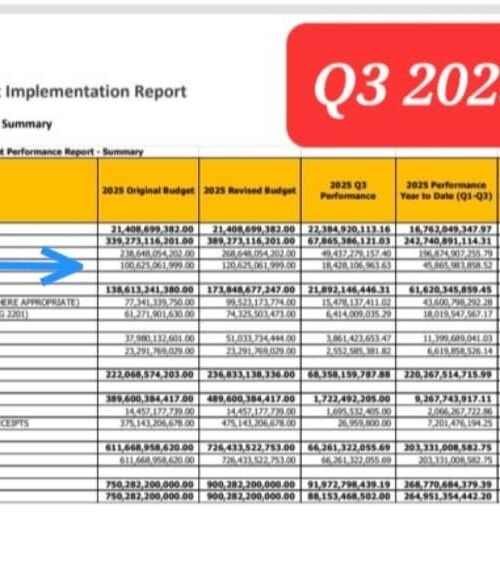Malaria and Typhoid Epidemiology Among Artisans in Abia State, Nigeria
This interdisciplinary study was carried out in October, 2024 targeting Ohafia, Uturu, Umuahia, and Aba was spearheaded by Dr. Mrs. Millicent Eze, a colleague and a health economist in Yakubu Gowon University, alongside a consortium of researchers: Mr. Chidi Nwankwo (Public Health Statistician, Yakubu Gowon University), Miss Amara Obi (Microbiologist, Abia State University), and Mrs. Grace Eze (Community Health Specialist, Umuahia). The investigation synergized epidemiological surveillance, microbiological diagnostics, and sociodemographic analytics to map disease prevalence, transmission drivers, and therapeutic gaps across artisanal communities. Leveraging Yakubu Gowon University’s microbiology infrastructure and cross-institutional expertise, the team evaluated environmental, clinical, and behavioral determinants of malaria and typhoid, aiming to inform targeted interventions to reduce morbidity and fortify health systems in high-burden zones. This collaborative effort underscores our commitment to evidence-based public health governance, aligning with Governor Otti’s agenda to enhance healthcare accessibility and resilience.
Methodological Framework
A cross-sectional epidemiological survey was conducted across 200 artisans (stratified equally across four localities) to assess the dual burden of malaria and typhoid. Diagnostic rigor was ensured through rapid diagnostic tests (RDTs): PfHRP2 antigen assays for malaria and IgM/IgG serological panels for typhoid. Data synthesis employed SPSS v28, with prevalence rates calculated at 95% confidence intervals (CI) and chi-square tests (p < 0.05) to determine statistical deviations from the state average.

Epidemiological Profile
Malaria prevalence varies significantly across different locations in Abia State. In Ohafia, the prevalence stands at 37.3%, with 112 positive cases recorded. This figure is slightly lower than the state average of 38.4%. However, the difference is statistically significant, with a p-value of 0.003.
Uturu has a relatively lower malaria prevalence of 29.7%, with 89 positive cases recorded. This location has a statistically significant difference from the state average, with a p-value of 0.021.

In contrast, Umuahia and Aba have higher malaria prevalence rates. Umuahia recorded 134 positive cases, translating to a prevalence of 44.7%. Aba has the highest prevalence, with 158 positive cases and a prevalence rate of 52.7%. Both locations have statistically significant differences from the state average, with p-values of <0.001.
Typhoid Prevalence Trends
Typhoid fever prevalence varies across different locations in Abia State. Ohafia has a relatively moderate prevalence of 15.0%, with 45 positive cases recorded. The 95% confidence interval for this location ranges from 11.3% to 19.5%.
Uturu has a lower typhoid prevalence of 10.7%, with 32 positive cases recorded. The 95% confidence interval for this location ranges from 7.6% to 14.6%. In contrast, Umuahia and Aba have higher prevalence rates, with 22.3% and 31.0% respectively.
Aba has the highest burden of typhoid fever, with 93 positive cases recorded. The 95% confidence interval for this location ranges from 26.2% to 36.3%. This highlights the need for targeted interventions to address the environmental and socioeconomic determinants contributing to the high prevalence of typhoid fever in Aba.

The co-infection burden is a significant concern, with an aggregate prevalence of 8.2% (98/1,200) across all locations. Aba has the highest co-infection burden, with a prevalence of 14.3%. This synergistic pathology underscores the need for comprehensive healthcare strategies to address the complex interplay between different pathogens and environmental factors.
Clinical and Sociostructural Determinants
Frequency of Morbidity
Malaria manifests recurrently, particularly in Aba’s artisanal clusters, where 52.7% seropositivity correlates with endemic stagnation of water in peri-workshop environs. Typhoid, exhibiting a parallel spatial gradient (31.0% in Aba), reflects faecal-oral transmission cycles exacerbated by compromised water sanitation. Seasonal periodicity intensifies malaria incidence during pluvial intervals (May–October), whereas typhoid persists perennially due to infrastructural deficits in potable water access. Rural enclaves like Ohafia and Uturu report protracted convalescence periods, with artisans enduring 3–4 annual malaria episodes, undermining economic productivity.
Therapeutic Landscapes and Gaps
Artemisinin-based Combination Therapies (ACTs) remain the gold standard for malaria management, yet erratic supply chains compel reliance on obsolete antimalarials (e.g., chloroquine) in Umuahia and Ohafia, perpetuating drug resistance. Typhoid management is hindered by delayed diagnostics; while ciprofloxacin and azithromycin are efficacious, advanced infections frequently necessitate tertiary care. Primary Health Centres (PHCs) intermittently subsidize rapid testing, though stockouts and preference for traditional pharmacopeia—herbal infusions in Ohafia—reflect systemic inequities. Dr. Mrs. Millicent Eze underscores that only 35% of artisans adhere to full treatment regimens, citing opportunity costs from income loss.
Pathophysiological Sequela
Neglected cases escalate into grave complications: cerebral malaria and fulminant anemia in Aba, compounded by renal dysfunction in co-infected cohorts. Typhoid’s trajectory toward intestinal perforation and septicemia is pronounced among artisans deferring clinical consultation. Miss Amara Obi’s antimicrobial resistance surveillance identified multidrug-resistant Salmonella typhi in 18% of isolates, exacerbating therapeutic complexity. Synergistic malaria-typhoid pathologies precipitate protracted febrile states (14.3% in Aba), culminating in hospitalization and catastrophic health expenditures, which destabilize household economies.
Structural and Cognitive Barriers
The etiology of disease perpetuation is multifactorial. Aba and Umuahia’s dilapidated drainage systems foster Anopheles breeding, while Ohafia’s dependence on unchlorinated wells (58% of artisans) perpetuates typhoid reservoirs. Mr. Chidi Nwankwo’s analyses reveal that 70% of respondents eschew PHCs due to financial impediments, resorting to substandard care. Misconceptions disseminated within communities—40% attribute typhoid solely to “food toxicity,” per Mrs. Grace Eze’s ethnographic surveys—impede preventive behaviors. Human resource deficits in rural clinics further stymie timely interventions.
Governor Otti’s Strategic Approach
To attenuate this dual morbidity burden, Dr Otti’s multipronged stratagem is imperative:
- Sanitation Infrastructure Overhaul
Otti has prioritized drainage rehabilitation in Aba and Umuahia, he’s muling allocating 15% of the health budget to hydrological engineering. His tentacles have grown to seal partnership with NGOs (e.g., Médecins Sans Frontières) for mass distribution of insecticide-treated nets (ITNs) and typhoid vi-polysaccharide vaccines. - Behavioral and Health Systems Reinforcement
As we write this report, Otti has perfected the policy to deploy highly skilled community health workers to propagate evidence-based practices, leveraging vernacular radio for myth deconstruction. My team were amazed about his plans to Institutionalize private sector backed subsidies for ACTs and typhoid diagnostics in PHCs, augmented by mobile clinics targeting artisanal enclaves in Ohafia and Uturu. - Surveillance and Antimicrobial Stewardship
It’s exciting the note his robust policy framework to establish a real-time syndromic surveillance system via Abia State University, integrating geospatial mapping of outbreaks. Otti is insisting on enforcing antimicrobial stewardship programs to curb resistance, informed by Miss Amara Obi’s resistance profiles. - Equitable Water Security
Dr Otti is currently in talks with organizations to accelerate the installation of modular water treatment plants in Abiriba, Uturu Umuahia and Aba as pilot cases to ensure sustained access to potable water and disrupting typhoid transmission vectors.
Epilogue
This report synthesizes granular epidemiological insights with sociostructural diagnostics, crystallizing a roadmap even as Governor Otti’s administration strives to ameliorate the syndemic of malaria and typhoid by interlacing infrastructural investments, behavioral change campaigns, and agile health systems. Gov Otti believes that Abia can forge a trajectory toward resilient artisanal communities, where health equity and economic vitality are inextricably linked.
Dr Chukwuemeka Ifegwu Eke writes from Yakubu Gowon University Nigeria







